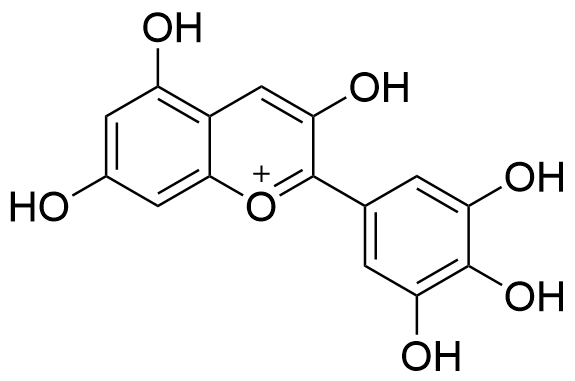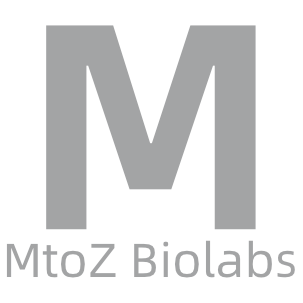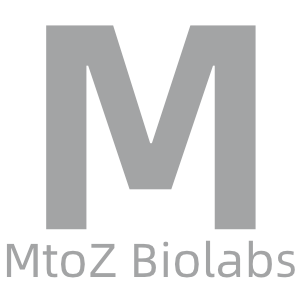Delphinidin Analysis Service
- Plant Tissues: Delphinidin is commonly found in fruits, leaves, flowers, and stems. The content varies across different plant species and growth stages.
- Biological Fluids: In human or animal model studies, blood, urine, plasma, or serum can be used to evaluate delphinidin metabolism and bioavailability.
- Food and Dietary Supplements: Delphinidin is widely present in foods like blueberries, blackberries, cranberries, grapes, red cabbage, and other fruits and vegetables. We also analyze dietary supplements containing delphinidin or its extracts.
Delphinidin is a natural polyphenolic pigment, classified under anthocyanins, found in various colorful vegetables and fruits, predominantly in pomegranates. It is an effective angiogenesis inhibitor with cytotoxic and anti-inflammatory properties. Delphinidin serves as a potential anticancer agent by inducing stress in breast cancer cells, leading to apoptosis and inhibition of cell proliferation. In triple-negative and ER-negative breast cancer cells, delphinidin inhibits the MAPK signaling pathway, NF-κB activation, and PI3K-dependent Akt phosphorylation. Studies indicate that delphinidin suppresses the PI3K/AKT/mTOR/p70S6K and Ras-ERK MAPK pathways. Identifying and quantifying changes in delphinidin levels is crucial for understanding its functional mechanisms, disease treatment, and drug development. MtoZ Biolabs offers HPLC-MS-based delphinidin identification and quantification services to support your research.

Figure 1. The Structure of Delphinidin
Services at MtoZ Biolabs
1. Delphinidin Extraction Methods at MtoZ Biolabs
2. Delphinidin Metabolomics Determination at MtoZ Biolabs
Delphinidin metabolomics determination methods are vital for studying its metabolic processes and metabolites within biological systems. The process includes sample preparation, metabolite extraction, separation, detection, and data analysis. Common analytical methods in delphinidin metabolomics research include liquid chromatography-mass spectrometry (LC-MS), gas chromatography-mass spectrometry (GC-MS), and ESI-TOF MS.
(1) Liquid Chromatography-Mass Spectrometry (LC-MS/MS)
Principle: Liquid chromatography separates delphinidin and its metabolites based on their retention times in the chromatographic column. The separated compounds are ionized in a mass spectrometer, and the resulting charged ions are detected based on their mass-to-charge ratio (m/z). Tandem mass spectrometry (MS/MS) further provides qualitative and quantitative analysis through fragment ion information. This technique offers high sensitivity and selectivity, capable of analyzing multiple metabolites simultaneously with strong qualitative and quantitative capabilities.
(2) Gas Chromatography-Mass Spectrometry (GC-MS)
Principle: The sample is vaporized at high temperatures and separated through a gas chromatographic column. Different compounds have varying retention times, achieving separation. The separated compounds are ionized in a mass spectrometer, with the resulting charged ions detected based on their mass-to-charge ratio (m/z). This technique is particularly suitable for volatile and semi-volatile compounds, offering high resolution and sensitivity with rich structural information.
(3) Electrospray Ionization-Time of Flight Mass Spectrometry (ESI-TOF MS)
Principle: The sample is ionized through electrospray ionization (ESI) and the resulting charged ions are separated and detected based on their mass-to-charge ratio (m/z) by the time-of-flight analyzer (TOF). This method is highly sensitive, suitable for analyzing large molecular compounds, and provides accurate molecular weight determination.
These methods systematically analyze delphinidin and its metabolites, offering insights into its metabolic pathways and biological activities. Each method has distinct advantages and limitations. MtoZ Biolabs selects the appropriate method based on sample properties and customer requirements, providing top-quality metabolomics analysis services.
Sample Submission Requirements
Applications
1. Evaluating Antioxidant Capacity: Delphinidin's strong antioxidant activity can be assessed through metabolomics studies, aiding in the prevention and treatment of oxidative stress-related diseases such as cardiovascular diseases, diabetes, and cancer.
2. Revealing Anti-inflammatory Mechanisms: Studying delphinidin's metabolic pathways helps understand its anti-inflammatory mechanisms, providing new insights for treating inflammatory diseases.
3. Studying Metabolic Diseases: Analyzing delphinidin metabolites reveals its potential role in metabolic diseases like obesity and fatty liver.
4. Functional Food Development: Delphinidin metabolomics research helps reveal the functional properties of foods rich in delphinidin, such as antioxidant, anti-inflammatory, and anticancer effects, supporting the development of functional foods.
5. Drug Efficacy Evaluation: Metabolomics analysis evaluates the efficacy of delphinidin and its derivatives, providing a basis for new drug development.
6. Pharmacokinetics Study: Studying delphinidin's absorption, distribution, metabolism, and excretion (ADME) optimizes drug formulations and dosages.
7. Toxicology Evaluation: Delphinidin metabolomics research reveals its toxic metabolites, supporting drug safety evaluation.
Deliverables
1. Experimental Procedures
2. Relevant Mass Spectrometry Parameters
3. Detailed Information on Delphinidin Analysis
4. Mass Spectrometry Images
5. Raw Data
How to order?







